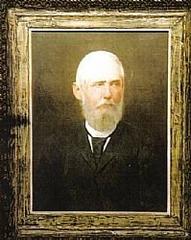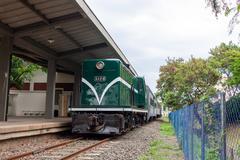Museu do Quartel Itu, Brazil: Visiting Hours, Tickets, and History
Date: 14/06/2025
Introduction
Nestled in the heart of Itu, São Paulo, the Museu do Quartel stands as a gateway to Brazil’s military and civic past. Housed within a beautifully preserved 19th-century barracks, the museum is a testament to Itu’s prominence in regional and national history—from its Jesuit foundations to its pivotal role in republican movements. As both a repository of artifacts and a vibrant cultural hub, the Museu do Quartel offers engaging exhibitions, guided tours, and educational programs, making it a must-visit for history lovers, tourists, and local residents alike (Museus de Itu, Prefeitura de Itu, G1 Globo).
Contents
- Historical Background and Evolution
- Architectural Features and Preservation
- Museum Collections and Highlights
- Educational and Cultural Significance
- Visitor Information: Hours, Tickets, Facilities
- Accessibility and Guided Tours
- Nearby Attractions and Itineraries
- Frequently Asked Questions (FAQ)
- Conclusion
- References
Historical Background and Evolution
From Barracks to Museum
Constructed in the 19th century, the building originally functioned as a military barracks, reflecting Brazil’s efforts to modernize its armed forces in the wake of the Paraguayan War and the dawn of the Republic (Museus de Itu). Serving as a headquarters for local police and military detachments, it became a central site for regional security and civic organization.
The transformation into a museum began in the late 20th century, driven by a community campaign to preserve Itu’s historical architecture and promote cultural tourism. Officially decommissioned as a barracks in 1997, the structure was restored and opened to the public in 2002, supported by local historians and heritage organizations (Prefeitura de Itu).
Jesuit and Republican Legacy
The museum complex also incorporates the Igreja São Luiz Gonzaga, a church established by the Jesuits in the 1860s, highlighting Itu’s role as a religious and educational center prior to its military functions (G1 Globo). The site witnessed key events, such as the 1873 Republican Convention, which set the stage for Brazil’s transition to a republic.
Architectural Features and Preservation
The Museu do Quartel is a striking example of late-colonial and 19th-century military architecture, characterized by:
- Robust stone and brick walls: Designed for defense and climate control.
- High ceilings and large windows: Providing light and ventilation.
- Central courtyard: Once a parade ground, now displaying historic artillery.
- Jesuit church integration: The Igreja São Luiz Gonzaga’s colonial façade and interior woodwork remain intact, offering a glimpse into Itu’s spiritual heritage.
Meticulous preservation efforts have maintained original features, including masonry, wooden beams, and decorative ironwork, ensuring authenticity and atmosphere for visitors (G1 Globo).
Museum Collections and Highlights
Military Artifacts
- Uniforms and weaponry: Spanning the Paraguayan War, Constitutionalist Revolution, and WWII, the collection includes rare uniforms, medals, swords, and firearms.
- Artillery: Notably, two German 75mm cannons grace the courtyard, symbolizing Itu’s military legacy.
- Historical documents: Enlistment records, orders, and correspondence trace the evolution of local and national military affairs (Museus de Itu).
Jesuit and Civic Heritage
- Religious artifacts: Vestments, chalices, and papal medals from the Colégio São Luiz Gonzaga.
- Photographic and documentary archives: Chronicling everyday life, parades, and civic ceremonies.
- Decorative arts: Antique silverware and liturgical objects illustrate the intersection of faith, art, and community.
Temporary Exhibitions and Educational Events
The museum hosts rotating exhibitions and workshops focusing on military history, local traditions, and heritage conservation, often in collaboration with educational institutions (Itu.com.br).
Educational and Cultural Significance
The Museu do Quartel is a center for community engagement and education, offering:
- Guided tours and lectures on military and civic history.
- Workshops and technical training through programs like the Projeto Oficina Escola de Artes e Ofícios de Itu (POEAO), in partnership with local universities (Jornal Periscópio).
- National commemorations: Hosting events for Independence Day, Army Day, and Republic Day.
Digital modernization efforts include virtual tours, online archives, and interactive displays to engage younger audiences and researchers.
Visitor Information: Hours, Tickets, Facilities
- Location: Praça Duque de Caxias, 284, Centro, Itu – SP (Brasil Infos)
- Visiting Hours:
- Monday to Thursday, Saturday, Sunday, and holidays: 9:00–12:00 and 13:00–16:00
- Friday: 9:00–12:00 only (G1 Globo)
- Some sources report Tuesday to Sunday, 9:00–17:00—confirm via official channels before visiting.
- Tickets: Admission is free for all visitors; donations are welcome.
- Amenities: Restrooms, small gift shop, shaded courtyard. No on-site café, but restaurants are nearby.
- Contact: +55 (11) 4023-0240
Accessibility and Guided Tours
- Accessibility: The museum is committed to inclusion, with ramps, clear signage, and staff assistance. Some historic areas may have limited access due to their age.
- Guided Tours: Offered primarily in Portuguese; English or Spanish tours may be arranged with advance notice (Museu do Quartel Facebook).
- Photography: Allowed in most areas for personal use (no flash or tripods). Check with staff before photographing sensitive sections.
Nearby Attractions and Suggested Itineraries
Within walking distance:
- Museu Republicano de Itu: Focuses on Brazil’s republican history (Museu Republicano).
- Igreja Matriz de Nossa Senhora da Candelária: An 18th-century baroque church.
- Praça da Matriz: Central square with colonial architecture and cafés.
A recommended itinerary: Visit Museu do Quartel in the morning, enjoy lunch in the historic center, then explore other museums and churches.
Frequently Asked Questions (FAQ)
Q: What are the visiting hours?
A: Typically Monday–Thursday, Saturday, Sunday, and holidays: 9:00–12:00 and 13:00–16:00; Friday: 9:00–12:00. Confirm hours on the official website or via phone.
Q: Is there an admission fee?
A: No, admission is free; donations are appreciated.
Q: Are guided tours available?
A: Yes, mainly in Portuguese. Arrange ahead for other languages.
Q: Is the museum accessible for people with disabilities?
A: Main areas are accessible; some historic sections may have limitations.
Q: Can I take photos?
A: Yes, without flash or tripods. Ask staff about any restrictions.
Q: How do I get there?
A: Centrally located with parking and public transportation nearby.
Conclusion
The Museu do Quartel is more than an artifact collection—it is a living institution preserving Itu’s military, civic, and religious heritage. Architecturally significant and rich in historical narratives, the museum offers free, accessible, and educational experiences for visitors of all backgrounds. Its central location in Itu’s historic district, proximity to other cultural landmarks, and dynamic community programs make it an essential stop for anyone interested in Brazil’s past.
For the latest on visiting hours, tickets, and events, consult the museum’s official website, social media, or the municipal tourism portal (Prefeitura de Itu).
Download the Audiala app for interactive tours and insider tips, and enjoy your journey through Itu’s living history!
References
- Museus de Itu
- Prefeitura de Itu
- G1 Globo
- Jornal Periscópio
- Museu do Quartel Facebook
- Museu do Quartel Instagram
- Itu.com.br
- Brasil Infos
- Museu Republicano


